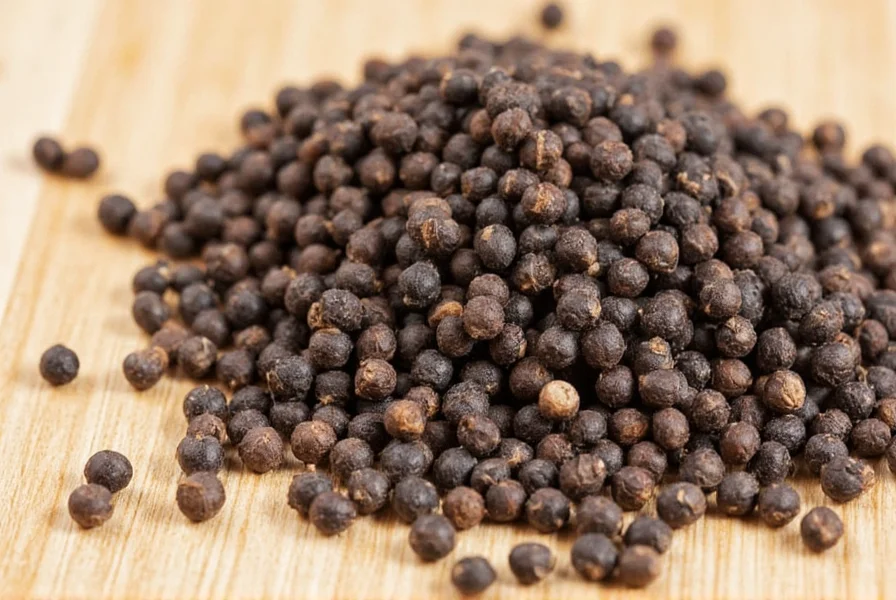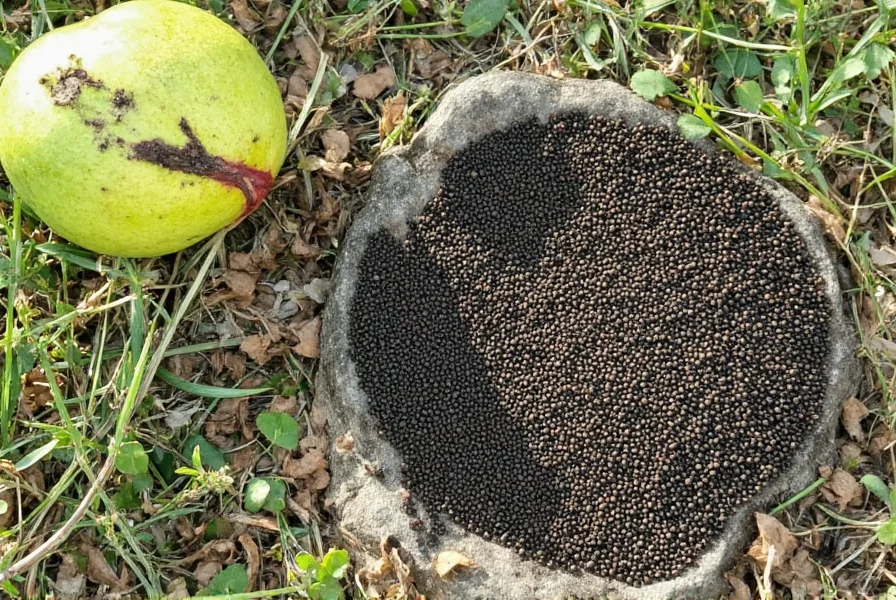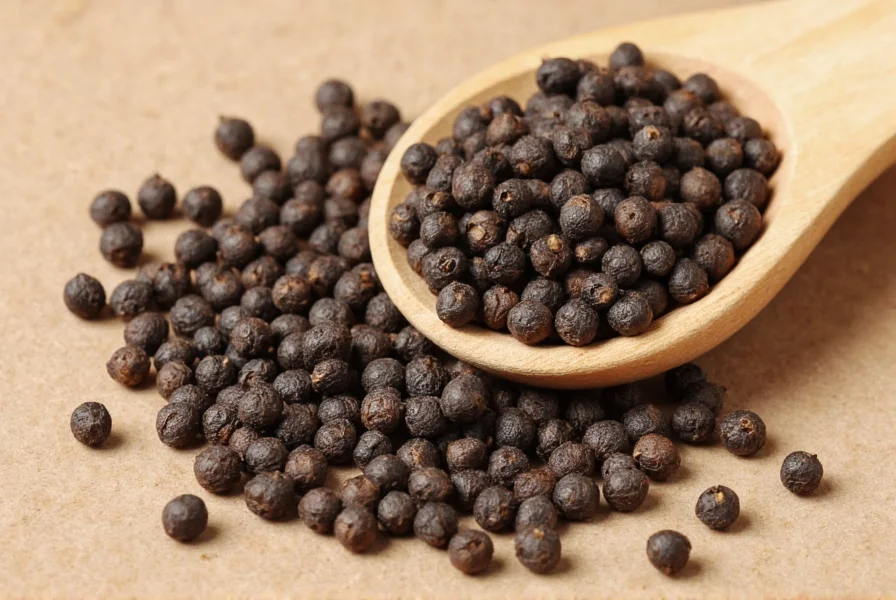For thousands of years, black pepper has been one of the world's most traded and valued spices. Known as "black gold" in ancient times, this humble spice has shaped trade routes, influenced economies, and seasoned cuisines across the globe. Understanding where does black pepper come from reveals not just a botanical story, but a rich tapestry of human history and cultural exchange.
The Botanical Source of Black Pepper
Black pepper comes from Piper nigrum, a perennial climbing vine belonging to the Piperaceae family. This tropical plant thrives in hot, humid climates with abundant rainfall. The vine produces small, berry-like fruits called peppercorns that grow in clusters along its flowering spikes. When these fruits are harvested at just the right stage of ripeness and properly processed, they become the familiar black peppercorns found in kitchens worldwide.
The Piper nigrum plant requires specific growing conditions to flourish:
- Temperatures between 75-85°F (24-29°C)
- High humidity levels (70-90%)
- Well-drained, loamy soil rich in organic matter
- Partial shade, especially during early growth stages
- Annual rainfall of 100-150 inches (250-380 cm)
Ancient Origins in India
Historical evidence confirms that black pepper is indigenous to the Western Ghats region of India, particularly the state of Kerala along the Malabar Coast. Archaeological findings suggest pepper was used in the Indian subcontinent as early as 2000 BCE. Ancient Indian texts, including Ayurvedic medical writings, reference pepper's culinary and medicinal properties.
For centuries, India maintained a virtual monopoly on the black pepper trade. The spice traveled along ancient trade routes to the Middle East, where it became highly prized. Roman historians documented the substantial trade between Rome and India, with black pepper being one of the most valuable commodities. In fact, peppercorns were sometimes used as currency, and their value was so significant that sacks of pepper were demanded as ransom during medieval times.
Modern Global Production
While India remains an important producer, the center of black pepper production has shifted over the centuries. Today, black pepper cultivation spans tropical regions across Asia, Africa, and South America. The following table shows the current global production landscape:
| Country | Annual Production (Metric Tons) | Global Market Share | Primary Growing Regions |
|---|---|---|---|
| Vietnam | 264,000 | 34% | Central Highlands, Southeast |
| Brazil | 85,000 | 11% | Pará, Espírito Santo |
| Indonesia | 78,000 | 10% | Sumatra, Bangka Island |
| India | 60,000 | 8% | Kerala, Karnataka, Tamil Nadu |
| Cameroon | 45,000 | 6% | Southern Regions |
Vietnam's emergence as the dominant producer began in the 1990s after the country liberalized its agricultural policies. Brazilian production expanded significantly after the spice was introduced to the country in the 19th century. While India's percentage of global production has decreased, the quality of Malabar pepper from Kerala remains highly regarded among connoisseurs.

From Vine to Spice: The Harvesting Process
Understanding where black pepper comes from requires examining how it's harvested and processed. The journey from vine to spice involves several precise steps:
- Harvesting: Workers pick the peppercorn spikes when most berries have turned from green to yellowish-red, indicating near-ripeness
- Sun-drying: The harvested spikes are spread on mats and sun-dried for 6-10 days
- Enzymatic reaction: During drying, enzymes cause the outer layer to turn black and develop piperine, the compound responsible for pepper's pungency
- Separation: The dried peppercorns are separated from the stems
- Sorting: Peppercorns are sorted by size, color, and quality
- Packaging: The final product is packaged for distribution
It's important to note that black pepper, white pepper, and green pepper all come from the same Piper nigrum plant but undergo different processing methods. White pepper consists of the seed only, with the outer fruit removed through soaking and fermentation. Green pepper is made from unripe berries preserved through freeze-drying or sulfur treatment.
Economic and Cultural Significance
Black pepper remains one of the most widely traded spices globally, with an annual market value exceeding $2 billion. In producing countries, pepper cultivation provides livelihoods for millions of smallholder farmers. The spice continues to play a vital role in culinary traditions worldwide, from Indian curries to French sauces to American steak seasoning.
Sustainable farming practices are becoming increasingly important in black pepper production. Many growers are adopting organic methods and shade-grown techniques to preserve biodiversity while maintaining soil health. Fair trade initiatives have also emerged to ensure farmers receive equitable compensation for their labor-intensive work.

Conclusion
When you ask where does black pepper come from, the answer spans continents and centuries. From its ancient origins along India's Malabar Coast to its current status as Vietnam's leading agricultural export, black pepper's journey reflects humanity's enduring fascination with flavor. This simple spice has influenced trade routes, shaped economies, and connected cultures across the globe. Whether you're grinding it over your dinner or exploring its historical significance, black pepper remains one of nature's most remarkable gifts to culinary tradition.
Frequently Asked Questions
Is black pepper originally from India?
Yes, black pepper is native to the Malabar Coast of southwestern India, specifically the region that is now the state of Kerala. Historical evidence shows pepper has been cultivated in this region for over 4,000 years, making it the original home of the Piper nigrum plant.
What country produces the most black pepper today?
Vietnam is currently the world's largest producer of black pepper, accounting for approximately 34% of global production. The country's Central Highlands region provides ideal growing conditions, and Vietnam has dominated global pepper markets since the 1990s when it expanded cultivation significantly.
How is black pepper different from white pepper?
Both black and white pepper come from the same Piper nigrum plant but undergo different processing. Black pepper consists of the whole dried fruit, while white pepper contains only the seed with the outer fruit layer removed. This difference in processing creates distinct flavor profiles—black pepper has a more complex, pungent flavor, while white pepper is milder with earthier notes.
Can black pepper be grown outside tropical regions?
The Piper nigrum plant requires specific tropical conditions to thrive and cannot be commercially grown outside these regions. It needs consistent temperatures between 75-85°F (24-29°C), high humidity, and substantial rainfall. While some enthusiasts grow pepper vines in greenhouses in temperate climates, commercial production remains limited to tropical zones near the equator.
Why was black pepper so valuable historically?
Black pepper was extremely valuable in ancient and medieval times because it was difficult to obtain outside its native region, had exceptional preservative qualities, and provided distinctive flavor to foods. It was sometimes used as currency, accepted as collateral, and even demanded as ransom. Its value stemmed from both scarcity in European markets and high demand for its culinary and medicinal properties.











 浙公网安备
33010002000092号
浙公网安备
33010002000092号 浙B2-20120091-4
浙B2-20120091-4